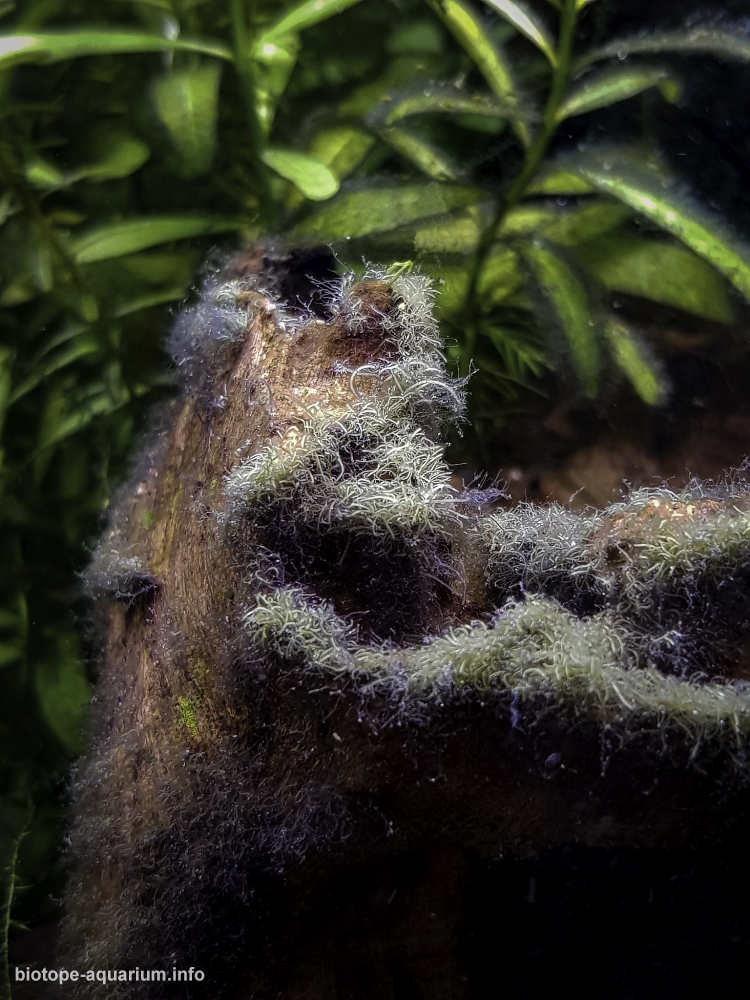
Tributary of Rio Negro. Sunset in a Forest Creek near Barcelos. Brazil
02.01.2022
Hainan Ding’an volcano cold spring in tourism season
05.01.2022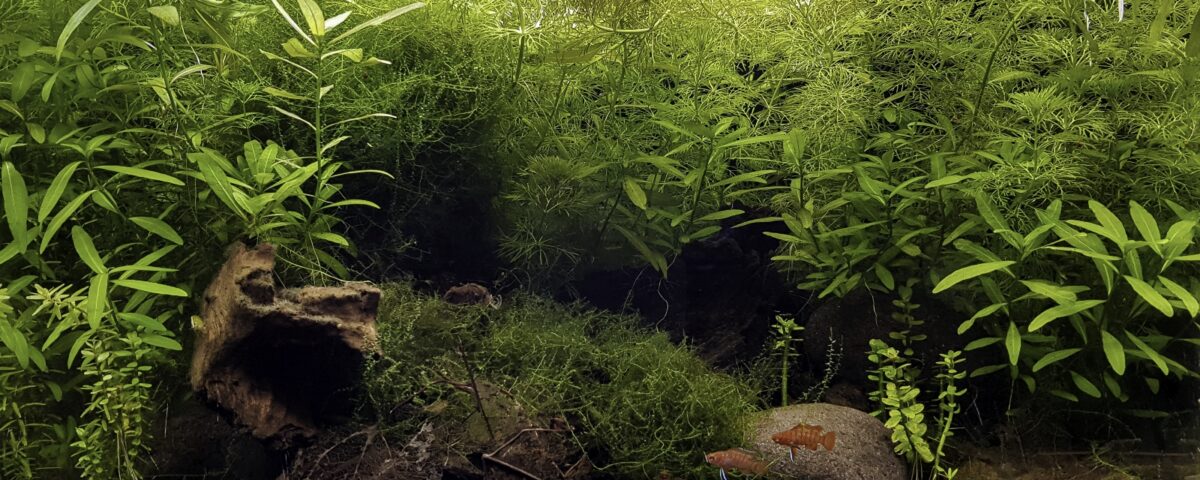
Volume of your aquarium: 40 L
Dimensions of your aquarium: 45x30x30 cm
List of fishes: Dario dario, Caridina babaulti and some snails.
List of plants: Hygrophila polysperma, Limnophila sessiliflora, Rotala indica, R. rotundifolia and some Amblystegium serpens moss.
Description of Decorations and Substrate: Dark grey river sand, gravel, small roundish rocks, small pieces of wood, and dry leaves (like, for example, Terminalia catappa) that, in nature, are deposited along the stream margins. With that, I tried to create many visual barriers and small caves that help fish to establish their territories, and simulate a stream margin with a small unevenness from the back of the aquarium till the front.
Description of Equipment: Filtration = SunSun – hang on back filter HBL-801, with an adjustable flow, that can arrive till a maximum of 500 L/h. I never used the maximum flow, since in the nature habitat the water flow isn’t strong, but it’s constantly renewed.
Lightning = Twinstar light 300 EA dimmered, simulating the natural daylight intensity, and giving the boost that the vibrant flora needs, like the intense sunlight that it recieves in the wild shallow streams.
Water Parameters: The water temperature varied from 22 ºC, in the cold season, until 26 ºC. The water parameters measured were: GH = 8; KH = 5; pH = 7,27; NH4 = 0 mg/L; NO2 = 0 mg/L; NO3 = 10 mg/L; PO4 = 0 mg/L; K = 12 mg/L; Fe = 0,25 mg/L; TDS = 127 mg/L; Condutivity = 236 uS/cm
Additional Info: I made weekly water changes (approximately 25%), and added 1L of water every 2 days, trying to simulate the constant renewal of the water that happen in nature.
To give some extra nutrients to the plants, and permit that they grow lusher, every 2 months, I put some fertilizer, Aquario’s NEO plants tab (Long lasting, K and Fe), in the soil. A good option for plants, that doesn’t change the water parameters, and consequently the fauna isn’t affected.
As Dario dario is a specie that needs some time to feed, and only eat live or frozen food, I decided to maintain them alone, only with shrimps. They maintain their natural hunting behaviour trying to eat some baby shrimps.
Aquarium video::
Description of the Area Surrounding the Biotope: Brahmaputra River is the major river of Central and Southern Asia. It flows some 2,900 Km from its source in the Himalayas (Manasarovar Lake region) to its confluence with the Ganges River, after which the mingled waters of the two rivers empty into the Bay of Bengal. [1, 2]
Along its course the Brahmaputra passes through the Tibet Autonomous Region of China, some Indian states and Bangladesh. For most of its length, the river serves as an important inland waterway. It is not, however, navigable between the mountains of Tibet and the plains of India. In its lower course the river is both a creator and a destroyer – depositing huge quantities of fertile alluvial soil but also causing disastrous and frequent floods. [1]
When Brahmaputra River enters in the Indian territory the river is mighty, even in the dry season, and during the rains its banks are more than 8 Km apart. As the river follows its braided 700 Km course through the valley, it receives several Himalayan streams, including the Subansiri, Kameng, Bhareli, Manas, Champamati, Sankosh and Raidāk rivers. [1, 3]
Raidāk River has its origin at Mount Akungphu at na altitude of 6400 m, in Bhutan. After emerging the Bhutan territory, it enters in West Bengal, near the border with the Assam state. Then the river bifurcates into two branches: Raidāk I and Raidāk II. The Riadāk I join the united streams of Torsa and Kaljani, goes by the name Raidāk and outflows into Brahmaputra in Bangladesh. While, Raidāk II is joined by the Sankosh river, and ultimately outflows into Brahmaputra in Bangladesh, by the name Gangadhar. In the low lying riverine plain, agricultural land in terraces lies the forest area that characterize the landscape. The Raidāk river is a very shallow but more than 15 m wide river, with moderate current, and the bottom is covered with gravel and small stones. In the zone near this river, between 26°30’ to 26°35’ N and 89°40 to 89°45 E, there are many small streams that inspired the creation of this biotope. [3, 4, 5, 6]
The Indian part of the Brahmaputra River drainage area is governed by the monsoon (wet, dry) climate, though it is somewhat modified there compared with other parts of the subcontinent; the hot season is shorter than usual, and the average annual temperature ranges from 26 to 29 °C. Precipitation is relatively heavy, and humidity is high throughout the year. The annual rainfall – between 1,780 and 3,810 mm – falls mostly between June and early October; however, light rains also fall from March to May. [1]
Description of the Underwater Landscape of the Biotope: Near Raidāk river there are some streams that pass through lush agricultural fields (often rice) where there are lots of water lilies floating, Myriophyllum sp. (possibly M. tetrandrum or M. tuberculatum) and some grasses growing in the water. In other streams the water is reddish because of the presence of humic acids. Some have substrates of fine sand and round rocks, a slow water movement, and mosses of the genera Vesicularia sp. or Amblystegium serpens. Others, in the dry season, can vary in width between 2-5 m and in depth 30-70 cm, with a crystal clear water, bottom covered by dark sand and fine gravel, and dense growths of marginal and aquatic vegetation [e.g. Hygrophila (possibly H. balsamica, H. corymbosa, H. difformis, H. lancea or H. polysperma), Limnophila (possibly L. aquatica, L. aromatica, L. heterophylla, L. indica, L. rugosa or L. sessiliflora), Ottelia (possibly O. alismoides), and Rotala (possibly R. indica, R. rotundifolia, R. serpyllifolia or R. wallichii) species]. Lastly, far away from Raidāk river, but always in the Brahmaputra River drainage, there are small clear water creeks, with slow flow, grey sand substract, and no submerged vegetation. [9, 10, 11, 12, 13, 14, 15, 16]
Description of the Habitat Parameters: The water physico-chemical parameters in a Raidāk river spot (26°21’07”N and 89°40’29”E), near the area that inspired the biotope, shows that the water temperature varies from 16,5 ºC, in the post-monsoon period, until 30 ºC in the pre-monsoon period. The turbidity chenges from 8,6 until 32,9 NTU, during the monsoon, the pH is between 6,8 and 7,2, and the water is moderately hard (gH between 6 and 8). The conductivity varies from 31,1 till 39,1 μs/cm, the nitrate concentration from 0,19 till 0,46 mg/L, the phosphate from 0,075 till 0,185 mg/L and the sulfate concentration from 4,1 till 5 mg/L. Obviously, some of these parameters can have slightly changes depending of the stream, and the period of the year. [7, 8, 9]
List of Fishes and Invertebrates Occurring in the Nature Biotope: In all these kinds of underwater landscapes, it is possible to find the extraordinary Dario dario fish, Together with the Indian shrimp specie Caridina babaulti, and many other native fish species, (some of them live in different water levels), like: Aborichthys elongatus, Badis assamensis, B. blosyrus, B. kanabos, B. singenensis, Batasio tengana, Brachydanio rerio, Colisa chuna, Danio dangila, Danionella sp., Dermogenys brachynotopterus, Devario assamensis, D. devario, Erethistes horai, E. jerdoni, E. pusillus, Erethistoides infuscatus, E. sicula, Gagata sexualis, Glyptothorax telchitta, Gogangra viridescens, Lepidocephalichthys guntea, Myersglanis blythii, Mystus bleekeri, M. carcio, Nangra assamensis, Oreichthys crenuchoides, Oryzias sp., Pethia aurea, P. conchonius, P. shalynius, Pseudolaguvia flavida and P. shawi. [5, 9, 10, 12, 13, 14, 16, 17, 18, 19, 20, 21, 22, 23, 24, 25, 26, 27, 28]
List of Plants Found in the Nature Biotope: Myriophyllum tetrandrum, M. tuberculatum, Vesicularia sp., Amblystegium serpens, Hygrophila balsamica, H. corymbosa, H. difformis, H. lancea or H. polysperma, Limnophila aquatica, L. aromatica, L. heterophylla, L. indica, L. rugosa or L. sessiliflora, Ottelia alismoides, and Rotala indica, R. rotundifolia, R. serpyllifolia and R. wallichii. [9, 10, 11, 12, 13, 14, 15, 16]
Threats to the Ecology of the Biotope: It is needless to mention that at present a large number of native fish species are facing serious threat. In this area, major reasons behind this situation include pollution, discharging industrial effluents, and especially discharged pesticides used in agriculture. All these factors either directly or indirectly harm the fish diversity. Residential and commercial developments including tourism and recreational areas are also affecting many endemic fish and plant species. [20, 22]
Sources of Information:
[1] – https://www.britannica.com/place/Brahmaputra-River – viewed on 28/04/2019.
[2] – https://en.wikipedia.org/wiki/Brahmaputra_River – viewed on 28/04/2019.
[3] – file:///C:/Users/Pedro/Downloads/18_chapter%2012.pdf – Chapter 12 – Terrain characteristics and its impact on the land use of Torsa River Basin, Raidak River Basin, Kaljini River Basin, Jainty River Basin – viewed on 28/04/2019.
[4] – https://en.wikipedia.org/wiki/Raid%C4%81k_River – viewed on 28/04/2019.
[5] – http://www.kolumbus.fi/vuorela.antti/westbengal.htm – viewed on 28/04/2019.
[6] – https://westbengal.pscnotes.com/geography-wbpsc/rivers-of-west-bengal/ – viewed on 29/04/2019.
[7] – Saha, A.; Chandra De, G.; Das, D.. The study of correlation between physico-chemical parameters and ichthyofaunal diversity at raidak river flowing through the Coochbehar district of west Bengal, India. International Jornal of Basic and Applied Research; 2249-3352 (P) 2278-0505 (E), 2019.
[8] – https://fish.mongabay.com/biotope_indian_river.htm – viewed on 28/04/2019.
[9] – http://kaushiksdarpan.blogspot.com/2010/11/article-on-different-indian-biotope.html – viewed on 29/04/2019.
[10] – http://www.kolumbus.fi/vuorela.antti/westbengal2.htm – viewed on 29/04/2019.
[11] – https://indiabiodiversity.org/species/show/232127 – viewed on 29/04/2019.
[12] – https://www.seriouslyfish.com/species/dario-dario/ – viewed on 29/04/2019.
[13] – https://biotopeaquariumproject.com/bin/meghalaya-jaintia-hills-wah-symploh-bleher/?fbclid=IwAR0kWuz40Tq4OihZlwK4UWQn8y7hRRLanDbSmh0Zpv3ItjGlekC5jwgbZB4 – viewed on 29/04/2019.
[14] – Venkataraman, K.; Chattopadhyay, A.; Subramanian, K. A.. Endemic Animals of India (Vertebrates). Zoological Survey of India: NBA, 2013.
[15] – Kasselmann, C.. Aquarium Plants. 1st ed. Germany: Aquarium Plants Publisher, 2020.
[16] – Baensch, H. A.; Riehl, R.. Baensch Aquarium Atlas – vol. 1. 6th ed. Germany: Mergus, 2005.
[17] – https://www.aquaticrepublic.com/common/search_result.php?distr_id_url=888&sort_order=species&results=100 – viewed on 29/04/2019.
[18] – https://www.theshrimpfarm.com/posts/shrimp-caresheet-caridina-babaulti/ – viewed on 29/04/2019.
[19] – Bleher, H.. Indian Ornamental Fishes – volume 1. 1st ed. Italy: Aquapress Publishers, 2018.
[20] – Chakraborty, A.; Shaw, R.; Ghosh, K.. An inventory of endemic fish species in India with notes on state-wise distribution and conservation measures; International Journal of Fisheries ans Aquatic Studies; 5(1): 253-264, 2017.
[21] – Dey, A.; Sarkar, K.; Barat, S.. Evaluation of fish biodiversity in rivers of three districts of eastern Himalayan region for conservation and sustainability. International Jornal of Applied Research; 1(9): 424-435, 2015.
[22] – Chakraborty, S.. Review on freshwater fish diversity of Northern West Bengal, India – status, threats and conservation measures. International Research Journal of Biological Sciences: 7(7), 39-51, 2018.
[23] – Baro, D. C.; Sharma, S.; Baishya, R. A.. Status of ornamental fish diversity of Sonkosh River, Bodoland. Sci Vis: 14(1), 2229-6026, 2014.
[24] – Dey, A.; Nur, R.; Sarkar, D.; Barat, S.. Ichthyofauna Diversity of River Kaljani in Cooch Behar District of West Bengal, India. International Journal of Pure & Applied Bioscience: 3(1): 247-256, 2015.
[25] – Dey, A.; Sarkar, D.. In search of Ichthyofauna diversity – A study on Torsa river in Cooch Behar district of West Bengal. International Journal of Pure & Applied Bioscience: 3(4): 235-241, 2015.
[26] – https://www.seriouslyfish.com/species/danio-rerio/ – viewed on 29/04/2019.
[27] – Jennings, G.. 500 Freshwater Aquarium Fish: a visual reference to the most popular species, 1st ed. Canada: Firefly Books Ltd., 2018.
[28] – Requena, J. M.; Klotz, W.; Martín, N.. Gambas, Joyas de Acuario, 1st ed. Spain: 2019.
Photo 2:
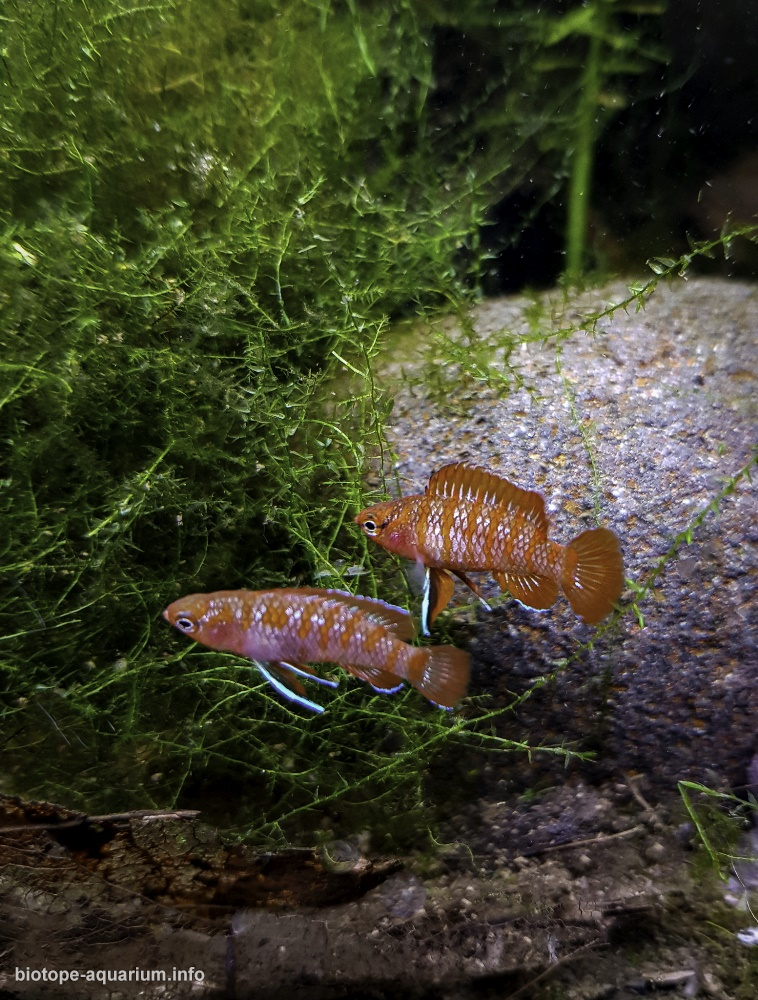
Photo 3:
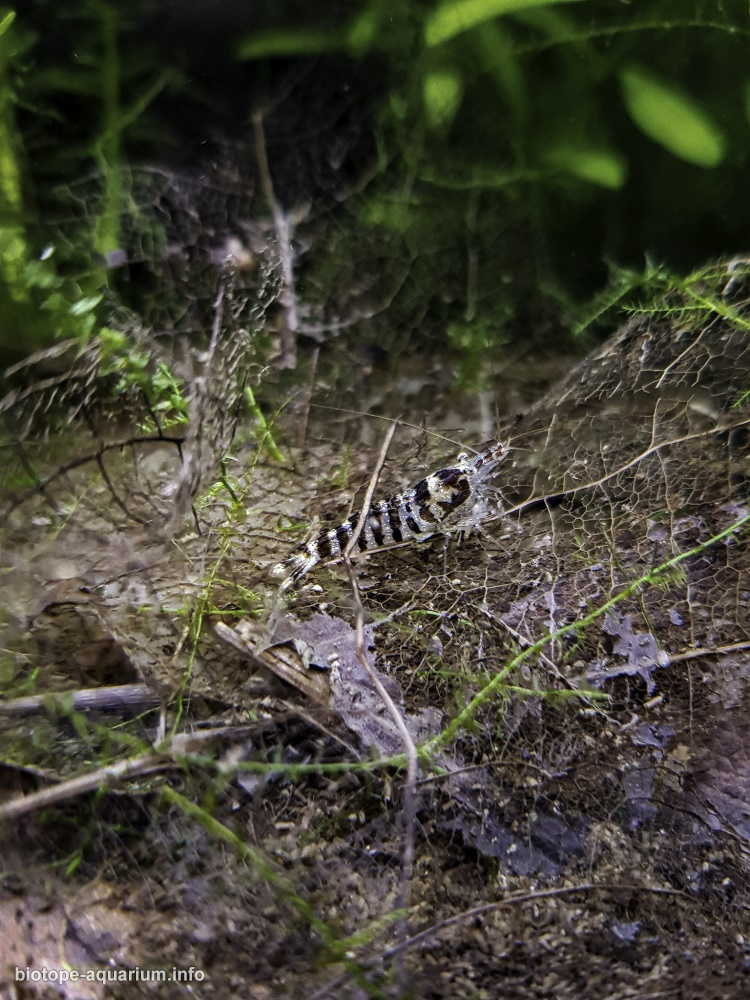
Photo 4:
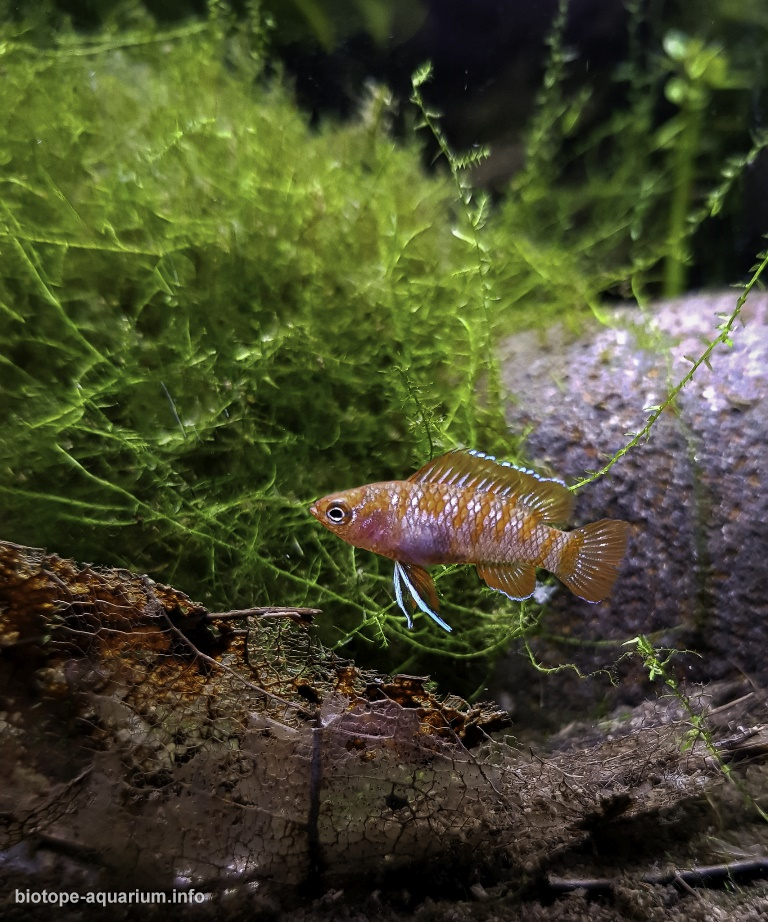
Photo 5:
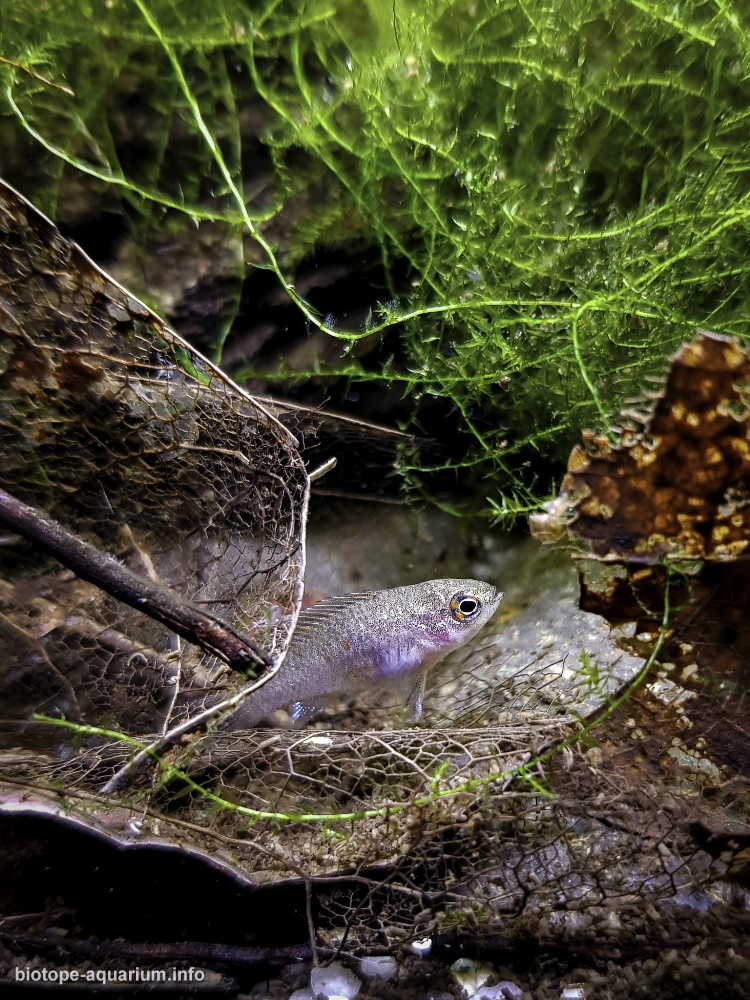
Photo 6:
